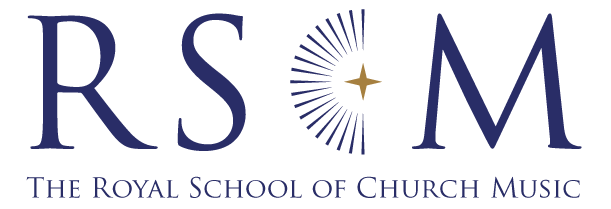Reviews of CDs
* Worth hearing
** Recommended
*** Essential listening
ORGAN CDs
***
THE ORGAN WORKS OF ROBIN MILFORD
Imogen Morgan plays the organ of St Mary’s Episcopal Cathedral, Edinburgh ♦ Priory PRCD1246
This exceptional disc of music by Robin Milford (1903–59) begs the question of why we don’t hear more of his music today. The Seven Seasonal Sketches are arrangements of some well-known carol tunes. Each sketch is a brief, spirited take on a carol melody, with spritely rhythms and colourful harmonizations. The recently restored Willis organ of St Mary’s Cathedral shows its might in the second of Two Autumn Meditations – ‘Come all you worthy Christian men’. Milford’s Chorale Prelude on ‘St Columba’ is given a magnificent reading. Closing with the astounding and shattering Six Easter Meditations, this substantial retrospective is full of delights and discoveries, with impressive performances by Imogen Morgan.
Milford took his own life at the age of 56, after suffering from depression after the deaths of his parents and five-year-old son, the deletion of many of his works from his publishers’ catalogues, and then the deaths of his two great friends and supporters, Gerald Finzi and Ralph Vaughan Williams. One wonders what he’d have achieved if he had lived longer.
***
CLAVIER-ÜBUNG III
Jeremy Filsell plays the five organs of St Thomas, Fifth Avenue, New York / Choir of St Thomas, Fifth Avenue ♦ Signum Classics SIGCD744 (2-CD set)
Of the four volumes of Clavier-Übung by J.S. Bach, the third is the only one conceived for organ. Jeremy Filsell treats us to a tour of the five(!) organs of St Thomas, Fifth Avenue, New York. Each pair of chorale preludes is preceded by the Lutheran chorale sung by the choir, an effective concept. The accompanying booklet, complete with photographs, specifications and a brief history of each organ, also includes the chorale texts. This double-disc set is an impressive record of the St Thomas instruments, and impressive describes Jeremy Filsell’s performances of this gargantuan collection too.
The power and might of the Miller-Scott Dobson chancel organ in the opening and closing ‘St Anne’ Praeludium and Fuga contrasts with the classically voiced, mechanical action Loening-Hancock gallery organ (built by Taylor and Boody) used for the majority of the chorale settings for two manuals and pedals. Of the other three organs, I particularly enjoyed the intimate sounds of the Aeolian-Skinner choir room organ in the manuals-only setting of Jesus Christus, unser Heiland. Regardless of the organ, Filsell’s playing is flawless throughout with crisp, clean ornamentation and clear textures.
Ian Munro
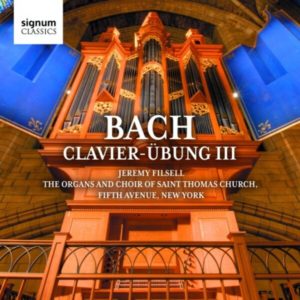
CHORAL CDs
***
ALL ANGELS: CHORAL WORKS BY GEORGE ARTHUR
Choir of Royal Holloway / Cecily Beer (harp) / Rupert Gough ♦ Convivium CR078 (2-CD set)
This double-disc set includes a generous selection of George Arthur’s choral music, ranging from his settings of the liturgy in Missa Brevis and Friday Service (a Magnificat and Nunc dimittis) to Three Christmas Carols and the multi-movement Speciosa. Rupert Gough and the choir of Royal Holloway give excellent performances; the dynamic range and vocal blend of this ensemble is impressive and the diction clear. The Gloria from Missa Brevis bounces along with great energy, while Ave Maris Stella and One in Christ are hauntingly beautiful. Ave Maria is sung with a good sense of pacing, Gough clearly relishing the fine acoustic of St Alban the Martyr, Birmingham. Speciosa was composed for upper voices and harp as a companion piece to Britten’s Ceremony of Carols. Cecily Beer’s sensitive harp accompaniments give this piece an ethereal quality; the solo harp movement adds its own sparkle to a delightful recording.
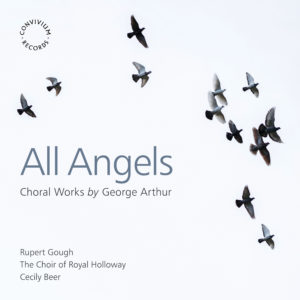
*
VOCES SEPARATAE – CHORAL WORKS BY GRAHAM KEITCH
Alexandra Burch, Carrie Kinnison, Matthew Curtis, Charlie Kinnison ♦ Willowhayne Records WHR077
Undeterred by the Covid lockdowns, Graham Keitch approached four American singers to record from their home studios the individual vocal parts for this CD. Lavender Audio’s Hauptwerk Hereford Cathedral sample set was used for the organ accompaniments. Despite the versatility of the singers and the more intimate feel resulting from using so few voices, the voice parts sound to me more enhanced than need be and the organ accompaniment is very prominent. It feels at times as if we are listening to a choir aid rather than a musical performance. Our Lord, our Lord and O glorious Prince St Michael are tracks that suffer due to balancing issues – the organ is just too powerful. The a cappella tracks fare slightly better: Absalon fili mi and O nata lux are two beautiful pieces, but deserving of a more satisfactory recording!
Ian Munro
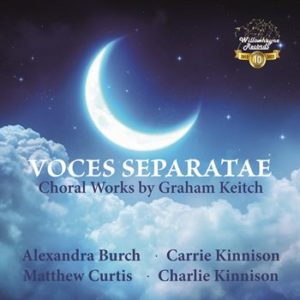
PASSIONTIDE AND EASTER CDs
***
CARITAS: MUSIC OF LOVE, HOPE, CHARITY AND CONSOLATION
Choir of Bath Abbey / Olly Chubb (trumpet) / Shean Bowers (organ and piano) / Huw Williams ♦ Regent REGCD569
This recital from Bath Abbey is a record of a choir at the peak of its powers. The interestingly designed programme includes some pieces suitable for Holy Week and some for Remembrance (and some for both). Gjeilo’s Ubi caritas and Tavener’s Song for Athene receive well-paced accounts that celebrate not just the choir’s excellence but also the glorious acoustic of Bath Abbey. Schubert’s Litanei features just the choristers, with sensitive piano accompaniment from Shean Bowers: the top notes are no problem for the young people, hit cleanly and with ease. Works by Rutter, Ireland, Harris and Walford Davies lead into Finzi’s Lo, the full final sacrifice, which receives a superb performance. Owen Chubb’s trumpet playing resounds gloriously round Bath Abbey in Burgon’s Nunc Dimittis and Mark Blatchly’s For the fallen. The Klais organ, played by Shean Bowers, is displayed effectively in Elgar’s ‘Nimrod’. It is a rewarding and moving CD.
Ian Munro
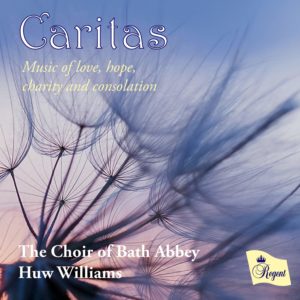
***
EASTERTIDE EVENSONG
Choir of St John’s College, Cambridge / James Anderson-Besant and Glen Dempsey (organ) / Andrew Nethsingha ♦ Signum Classics SIGCD707
It is difficult to review this disc without a surfeit of superlatives. Howells’s ‘Gloucester’ Service provides the canticles, with well-judged tempi allowing the harmonies and long vocal lines to make their mark but never losing a sense of direction, culminating in exciting final Glorias. From introit – Julian Anderson’s My beloved spake – through to anthem – John Taverner’s Dum transisset Sabbatum (I) – the balance and the blend of voices is admirable. The Howells and the psalms demonstrate colourful and subtle playing of the organ, which comes into its own at the end, when James Anderson-Besant gives an exuberant performance of the Widor Symphonie VI Finale, making the most of its tumultuous coda.
Judith Markwith
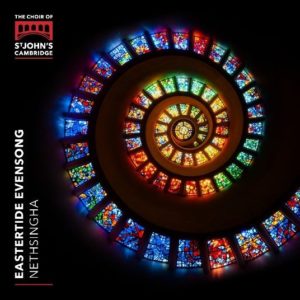
ORGAN DVDs
***
BACH AND EXPRESSION
Daniel Moult and Martin Schmeding play the two Silbermann organs in Rötha, the Trost in Waltershausen and the Hildebrandt in Sangerhausen ♦ Films by Will Fraser ♦ Fugue State Films FSFDVD015 (4-disc set: 2 CDs plus 2 DVDs)
Here’s a boxed set of pure Bach heaven: CDs and DVDs adding up to over six hours devoted to the organ music of the great master. Daniel Moult – who many will remember used to accompany the RSCM Millennium Youth Choir – and Martin Schmeding have recorded a wide range of well-known and less familiar organ works, spread over two CDs. One of the two DVDs contains filmed performances of all music recorded on the CDs. Apart from the stylish and indeed virtuosic playing here, the fairly crucial co-stars are four historic organs in Germany dating back to J.S. Bach’s time: two Silbermann instruments built in the 1720s, a Hildebrandt instrument dated 1728 and a large three-manual instrument built by Trost in 1730 – claimed to be one of the best preserved surviving baroque organs in the world. These period pieces are worth seeing on film – ornate baroque casework and carvings, wooden stops, well-worn keys and straight pedalboards. As for the listening, these instruments – whether small or large – sound truly magnificent; here is both grandeur and intimacy, but above all clarity. The point is made that their builders would have known Bach. Only one is at modern concert pitch; two have been tuned to equal temperament. One slight distraction in the otherwise excellent audio quality is some limiting in louder passages.
Apart from all the organ playing, the four instruments are demonstrated by both players in separate films; here there’s plenty of detail about their historic background and their builders. It seems, for instance, there was some controversy regarding the building of the Trost instrument.
The other DVD is a documentary by film-maker Will Fraser that aims to answer the question – how you should play Bach’s music? It takes 204 minutes to answer the question in seven chapters, but clearly these period instruments inform part of the answer. Both players bring the fruits of considerable research and consider contentious questions such as manual changes and stop changes during a piece. From Martin Schmeding there are fascinating insights into Lutheran theology and liturgy. Some will notice that both players (well-worn organ shoes notwithstanding) play the pedals with toes only – reflecting modern thinking about pedal technique in Bach’s time.
This has been a mammoth project, filmed during 2021. If a trip to Bach’s Leipzig is on your bucket list, this is the next best thing in the meantime.
Stuart Robinson
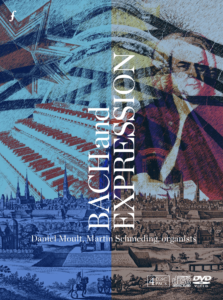
BOOKS
CATHEDRALS, CHAPELS, ORGANS, CHOIRS: A PERSONAL VIEW
MacDonald, Sarah E.
August Press 428pp. PB 979-8-218-04214-1 £26.99
Well known in the UK cathedral music world as director of music at Selwyn College in Cambridge, and director of the girls choir at Ely Cathedral, Sarah MacDonald has been penning a monthly column in The American Organist magazine since 2009. Her Canadian background, plus 17 years of experience in Cambridge, gave her a unique perspective of cathedral and collegiate music on this side of the Atlantic. Her regular column was intended to enlighten American readers’ understanding of the highly regarded, but often mysterious and little understood, traditions within UK cathedral music. Her 13 years of regular short essays are collected here into a substantial volume.
As a regular reader of The American Organist for over 25 years, I have read all of her essays before, but it is good to have so much common sense and her many down-to-earth personal views all in one place. One slight downside is the inevitable repetition of certain everyday matters over so many years, such as the selection and training of choristers and organ scholars.
The timeline of these articles covers the Covid pandemic and future historians may well look back to this book to reveal strategies of how choirs of excellence coped with training their singers through that bleak time.
The broad title of this book gives no clear indication of the target audience, but anyone interested in the Anglican choral tradition, whether professional or amateur, will gain considerable insight into this niche world.
John Henderson
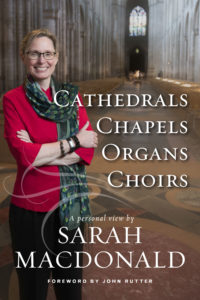
VAUGHAN WILLIAMS
Eric Saylor
Oxford University Press 344pp. HB 978-0-19-091856-9 £26.99
Published towards the end of last year, the 150th anniversary of the birth of Ralph Vaughan Williams (1872–1958), this new biography has much to say about the background to RVW’s compositions, including his church music. He was always concerned to improve the standards and quality of British musical life, including in the music provided for the liturgy and of course in The English Hymnal of 1906. When discussing his church music, one is often made aware of how it was one special facet of his concern for the quality of all amateur music-making.
The new material presented here that concerns the early works has little direct relevance to his church compositions, the earliest of which appears to be the motet O clap your hands of 1920. However, there followed a series of compositions for church use, concluding, shortly before his death, with the motet A vision of aeroplanes, which sets words from Ezekiel and is dedicated to Harold Darke. It is described here as ‘one of [RVW’s] strangest and most difficult choral works’ – what a contrast is his previous church composition, the 1956 Te Deum and Benedictus for unison voices or mixed voices with accompaniment of organ or harmonium or piano!
The chapters are arranged in pairs and by decade, so that a chapter with biographical description of a particular 10 years is followed by a chapter discussing the music of that same period. Recent access to some 5000 letters written by RVW has contributed to a fuller understanding of his personal life and of his creative personality. The book is a ‘must’ for all Vaughan Williams enthusiasts.
Julian Elloway
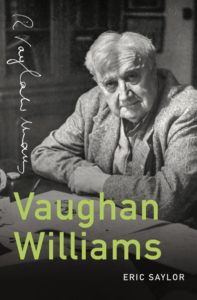
Reviews of printed music
CHORAL MUSIC
E Easy
M Medium
D Difficult
EASY ANTHEMS
DEUS EST CARITAS [E]
Amy Beach adpt. Simon Jackson
SATB
Encore Publications 020704 £1.95
THE BEATITUDES [E]
Tim Knight
SATB
Tim Knight Music TKM865 £1.80
In the last issue of CMQ (December 2022), I welcomed the publication of Simon Jackson’s adaptation of Amy Beach’s Op. 8 No. 2, although the replacement of the original lyrics meant that an extra 10 bars of music had been composed to make them fit. For Deus est caritas, an adaptation of Beach’s Op. 8 No. 3, again the words have been replaced, but this time there are not enough syllables and three bars of original music have been excised. One wonders why the original words (‘Peace I leave with you, my peace I give unto you …’) had to be replaced. That said, this is an attractive and easy anthem, with replacement Latin words (in translation, ‘God is love’), that should be widely sung.
Tim Knight’s rather sweet setting of the Beatitudes, written ‘in affectionate memory of those we have lost’, has a pleasing sincerity. Overall, the harmonies are fairly static and contemplative, but the changes in musical treatment of each of the eight sentences (starting ‘Blessed are …’) retain variety and interest.
Stephen Patterson
HOLY WEEK
THE CRUCIFIXION [E/M]
John Stainer ed. Jeremy Dibble
T and B soli, SATB choir and organ
RSCM Publications 978-0-85402-336-3 £6.95
Only this year has the expiry of copyright made it possible to publish alternatives to the Novello edition of The Crucifixion by Sir John Stainer (1840–1901). The author, the Revd J. Sparrow Simpson (1859–1952), wrote the text when he was just 27 and was still alive 50 years after Stainer’s death. The New Novello edition of 1999 is perfectly serviceable, and both that and this new RSCM edition by Jeremy Dibble take the 1915 revised edition as their source, although the RSCM edition has also benefited from the availability of Stainer’s manuscript at Durham University, where the editor, Jeremy Dibble, is professor. Furthermore, both these editions retain the same page layout to make it easy to combine them with choirs where some of the singers are using the old editions.
At a quick glance, therefore, the music pages might appear largely identical. However, Jeremy Dibble has applied his knowledge of Stainer’s music to clarify many details of vocal dynamics and phrasing, and organ registration and use of pedals – all distinguished from Stainer’s original marks by brackets, vertical slashes, or (for ties and slurs) dotted lines. But what makes this new edition particularly worthwhile is the additional material: the highly readable introduction describing the ecclesiastical and liturgical background of its composition, the four facsimiles of pages of manuscript, the description of the sources and notes on performance, all before we reach the critical commentary. That material puts this new edition in a class of its own, even without it also being (at the time of writing) less expensive than any alternative.
Julian Elloway
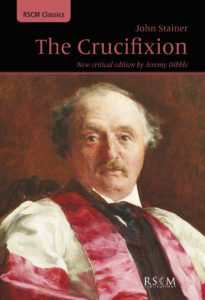
TANTUM ERGO [E]
Solo voice, SATB choir and organ
TANTUM ERGO Op. 65 No. 2 [M]
SSA (with soli) and organ
Gabriel Fauré ed. Helga Schauerte-Maubouet
Bärenreiter BA25149 and 25145 £2.50 each
These two melodious settings by Gabriel Fauré (1845–1924) follow the same pattern with a single-bar organ introduction, the first verse (‘Tantum ergo Sacramentum’) sung by solo voice or voices, the second (‘Genitori, genitoque’) by full choir, followed by a brief sung coda. The organ supports all the vocal lines. The setting with no opus number was published in 1904; both publications are extracted from the new Fauré complete edition and are easy and tuneful.
PASSION NACH BARTHOLD HEINRICH BROCKES [M]
G.F. Handel
SATB soli and choir with orchestra
Bärenreiter vocal score BA11311-90 £25.50
Handel’s so-called ‘Brockes-Passion’ crops up in various guises, sometimes in shortened English-language versions or just single movements, such as ‘Lord, I trust thee’ as an easy anthem. Denys Darlow, in his abbreviated edition of the work under the title The Passion of Christ, estimates that a performance of the complete Passion would take three to four hours. At over 250 pages, the new Bärenreiter complete vocal score is indeed huge (in size and price), but it is taken from the urtext of the Handel Halle Edition and should be regarded as the definitive source for conductors or singers who want to see what Handel wrote. The new piano reduction does not attempt to include all the orchestral notes and is pleasingly playable. A paperback full score is also available (BA11311).
Stephen Patterson
EASTER
MOST GLORIOUS LORD OF LIFE [M/D]
Francis Jackson
SATB and organ
Church Music Society OS49 £3.25
Francis Jackson (1917–2022) wrote Most glorious Lord of life for the 2009 Edington Music Festival and revised it for publication in the final year of his life. It starts confidently, the choir entering with a rising octave and with angular ascending phrases proclaiming Christ’s triumph over death. A gentler feeling takes over for passages about Christ’s love and our love, and the opening material returns, transformed as if by the power of love. The concluding ‘love is the lesson which the Lord us taught’ is serene.
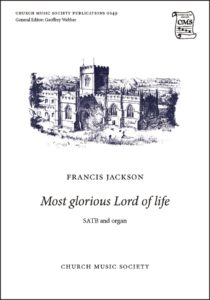
HEARTS TO HEAVEN [M]
Alan Bullard
SATB or SAMen
Encore Publications 020719 £1.95
PEACE, FAITH AND HOPE [E/M]
Timothy Rogers
SATB
Encore Publications 020724 £1.95
CHRIST THE LORD IS RISEN TODAY [E/M]
Alison Willis
SATB and keyboard
Encore Publications 020730 £2.50
Although provided with a flexible scoring (the tenor part can simply be omitted), Bullard’s setting of Hearts to heaven needs precise, rhythmic singing. A ‘hymn of gladness’, it dances its way through the text and, done well, would bring joy to any Easter service.
Timothy Rogers has taken a charming Ukrainian folk melody, added English words and arranged the music in a way that retains the feeling of the folk melody and therefore of a carol. Peace, faith and hope deserves to take its place in the small repertoire of Easter carols (as opposed to anthems). There is also a version, published separately, with Christmas words, so rehearsal time can be put to good use.
Alison Willis’s Easter anthem is a full-bodied setting of verses from Christ the Lord is risen today. Although there is a quiet alternation between men, ‘Say, O wondering Mary, say’ and women, ‘I beheld where Christ had lain’, the overall effect is triumphant. Much of the vocal writing is in unison or doubling S+T and A+B, making it comparatively easy to learn.
James L. Montgomery
PENTECOST
VENI, SANCTE SPIRITUS Op. 109 [M]
Christian Heinrich Rinck ed. Christoph Dohr
SATB soli, SATB choir and organ
Edition Dohr (Universal Edition) 20354 £7.50
Rinck, or Rink (1770–1846), was an exact contemporary of Beethoven, as well as a pupil of a pupil of J.S. Bach. His sacred choral music provides valuable repertoire from a period infrequently encountered in church and cathedral music lists. This five-minute motet was written with German text, but Rinck’s original publishers arranged for this Latin-texted version. It is mostly contemplative and devotional in feel, until the final request for eternal joy followed by a sturdy Amen fugue. But then, unexpectedly, the opening feel of the piece returns with a gentle repetition of ‘Veni, Sancte Spiritus’.
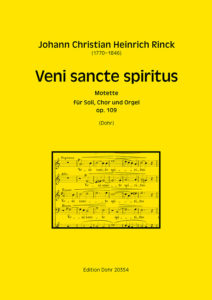
LIKE THE DOVE [E/M]
Alison Willis
SATB and organ
Encore Publications 020722 £2.50
Sustained chords support, but do not duplicate, slowly moving melodic lines, marked ‘with serenity’ in this setting of Anglo-Saxon words. The music becomes contrapuntal and builds to a forte climax as the Spirit is described as dwelling ‘like the dove in quiet water’. The quietness returns to conclude this atmospheric anthem.
DARAN ERKENNEN WIR, DAS WIR IN IHM BLEIBEN [M]
Johann Kuhnau ed. David Erler
SSATB soli and choir with orchestra
Breitkopf & Härtel vocal score EB32090 €12.90
This 12-minute cantata for the first day of Pentecost by Johann Kuhnau (1660–1722) is based on 1 John 4.13: ‘By this we know that we abide in him and he in us, because he has given us of his Spirit.’ With German text, these words form the second of the six movements, with an opening instrumental Sonata and four subsequent movements setting a poem that is, in effect, a sermon on that sentence from 1 John. Kuhnau’s music ranges from dramatic to highly devotional and part of its attraction is the juxtaposition of mood. David Erler has resolved ambiguities in the one surviving source and produced a practical edition suitable for non-specialist performers. Full details are included in the full score, published as PB32090.
James L. Montgomery
ORGAN MUSIC
E Easy
M Medium
D Difficult
HOLY WEEK AND EASTER
BY THE FOOT OF THE CROSS [E/M]
POSTLUDE ON GELOB’T SEI GOTT [M/D]
Vernon Hoyle
Banks Music Publications 14117 and 14118 £4.50 each
These two voluntaries take their character from the tunes on which they are based. By the foot of the cross derives from a wistful Spanish folk tune. The piece is described as ‘a reflection’, which sums up its flowing invention around the melody. Gelob’t sei Gott, on the other hand, strides through a series of variations on the triple-time Easter tune – joyful and triumphant, needing a large instrument including a solo Trumpet stop.
Duncan Watkins
MANUALS ONLY
VIER ORGELZYKLEN [D]
Andreas Willscher
Dr J. Butz BU3010 €16.00
It is a pity that this substantial publication of ‘Four Organ Cycles’ only has German text, as there is much that might interest a good player needing voluntaries or concert music without pedals. However, German is essential to understand the extensive introduction describing (and sometimes explaining) the music. The opening triptych comprises a Carillon (designed as a prelude or offertory), a Communion and a Toccata intended as a postlude that has a flamboyant final nine bars for which a less-difficult alternative is offered. Seven variations on the plainchant tune for ‘Ubi caritas et amor’ cover a wide range of moods, some more spirited than normally associated with the text. Impressions from Rügen (a German Baltic island) are rather site-specific, although the church dedicated to ‘heiliger Georg’ inspires a boisterous depiction of St George on his horse. Finally comes a ‘wine breviary’, the six movements of which are dedicated to six different Rieslings that may be to some players’ taste. One of the movements, entitled ‘Hell’, exploits the tritone ‘diabolus in musica’. It is a colourful volume of pieces.
Julian Elloway
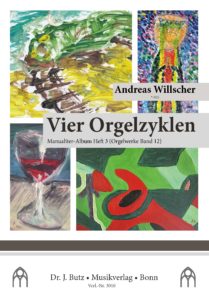
A THIRD SET OF SIX SONATAS Op. 5 [mostly M/D]
John Garth ed. David Patrick
Fitzjohn Music Publications £12.00
Little is known about John Garth (c.1722–c.1810) beyond the fact that he was organist of Sedgefield parish church, near Durham, and performed concerts with Charles Avison. The music is in an Italianate galant style, with much dashing up and down the keyboard, if without great harmonic interest or memorable melodies. But in the hands of a skilful player these two-movement voluntaries would certainly impress by their virtuosity and bring a smile to the audience or congregation.
This new edition by David Patrick is their first publication since 1775. As we have come to expect from Fitzjohn Music Publications, there are excellent performance suggestions, addressing the difficult question of ornamentation, which ‘is as confusing for today’s performers as it must have been at the time these pieces were written’. Registrations are given for two organs that Garth is known to have played; the Sedgefield instrument had three manuals, including a Swell needed for crescendo effects in two of the sonatas.
THREE SHORT PIECES [M]
Stephen Burtonwood
Fagus-music.com £10.00
A rather cheeky Prelude (‘very fast’), with an espressivo central section, is followed by an Aria that needs two manuals to solo out a melody that sometimes overlaps with the accompaniment. For me, the most distinctive movement is the third, a minor-key Jig that has a rather attractive, mournful quality (and is also written for two manuals). The publisher deserves congratulation on squeezing the Jig onto two facing pages, as any page-turn would be impossible!
Duncan Watkins
VOLUNTARIES (WITH PEDALS)
GRAND CHOEUR, CHACONE AND SCHERZO [D]
Clément Loret ed. David Patrick
Fitzjohn Music Publications £9.00
The Douze pièces of Clément Loret (1833–1909) date from 1898 and include the three pieces that David Patrick has selected for this volume. The most substantial comes first, a Grand Choeur in B flat, a sort of joyful march. Chacone starts as though it might have a repeating chaconne-like ground bass, but then goes its own way with some charming harmonic sidesteps. A final Scherzo has outer sections that dart about with a playful, will-o’-the-wisp character and a more stately central section.
AN ORESTE RAVANELLO ALBUM [D]
Oreste Ravanello ed. David Patrick
Fitzjohn Music Publications £10.00
John Henderson, in his Directory entry for Oreste Ravanello (1871–1938), observes that he has heard him referred to as the ‘Italian Reger’, but, judging by the pieces he had come across, he ‘would more describe him as the “Italian Rheinberger”’. Thanks to this selection of seven varied pieces, we can all make the judgement. Perhaps it is the harmonic language of Rheinberger applied with the passion of Reger (but luckily without Reger’s difficulty).
Three individual pieces open the collection: Fughetta con Corale, Preludio (in forma di studio) and a mighty Christus resurrexit subtitled ‘Hymn of the Gloria’, with extremes of dynamics and a tumultuous ending. Then comes what is the main reason for recommending this volume, the Four Pieces Op. 112 of 1920. These were originally for organ or harmonium, on two staves; David Patrick has added a pedal part lightly, so that the pieces retain their original character. The second piece, Armonie sul nome di Bach, uses the B-A-C-H motif to pursue shifting harmonies, while the final Toccata brillante is indeed brilliant and not as difficult as it sounds – an audience pleaser.
Duncan Watkins
ARRANGEMENTS AND TRANSCRIPTIONS
THREE PRELUDES [M]
George Gershwin arr. Kiyo Watanabe
POLOVTSIAN DANCES [D]
Alexander Borodin
arr. for organ duet by Kiyo Watanabe
Trumph – T074025 £14.50; T074016 £19.50
These two new arrangements represent just a small number of organ transcriptions from the desk of Kiyo Watanabe. The Three Preludes by George Gershwin form a miniature suite, which allows the organist to explore different colours and textures. The ‘Polovtsian Dances’ from Prince Igor by Alexander Borodin, which have been arranged for organ duet, are more complicated technically and would require two organists of good technical ability who know each other well in order to negotiate some of the complex rhythmical and technical issues that this piece presents. They are both published with wire binding, making them easy to use at the console.
